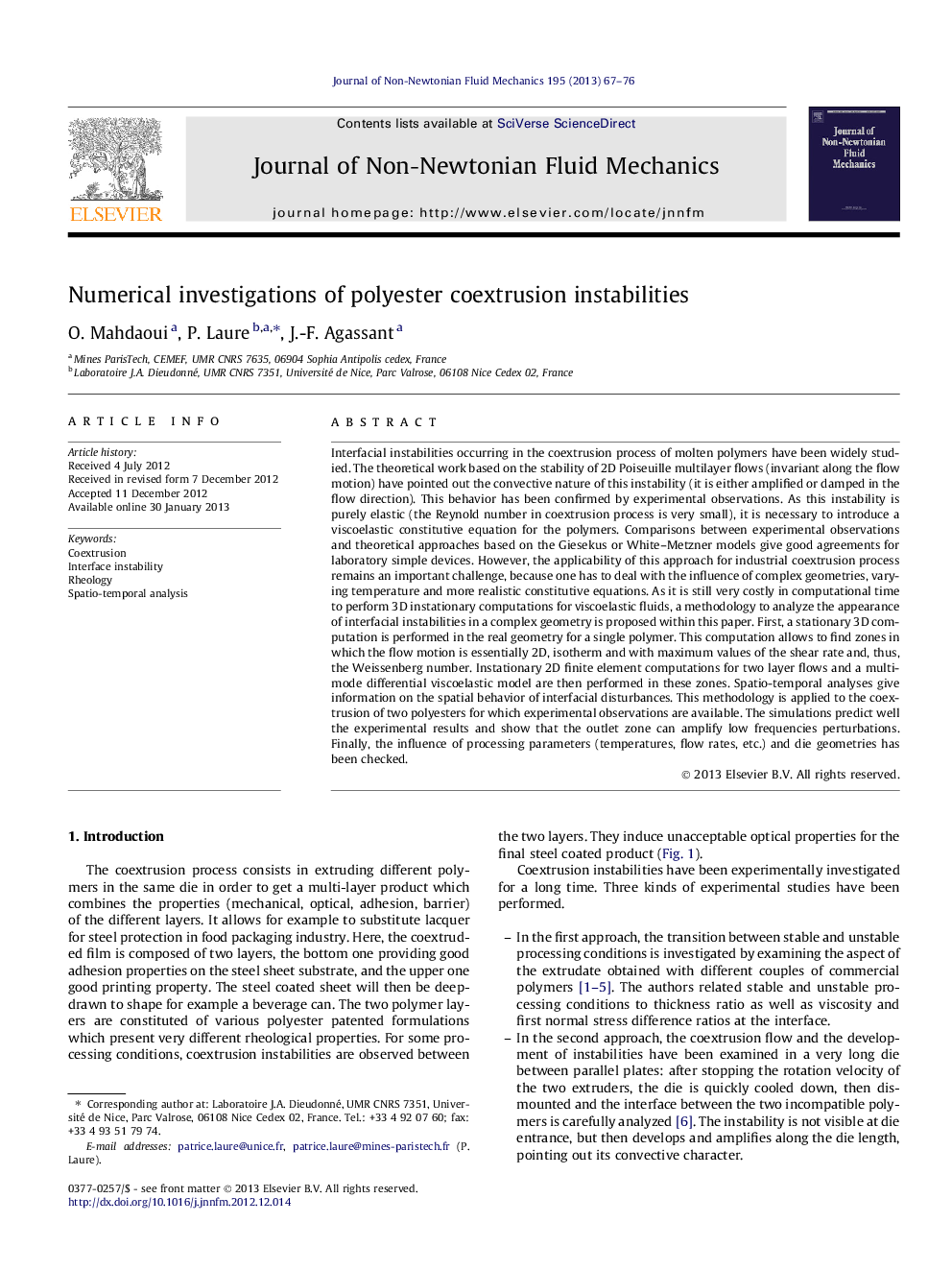| Article ID | Journal | Published Year | Pages | File Type |
|---|---|---|---|---|
| 670651 | Journal of Non-Newtonian Fluid Mechanics | 2013 | 10 Pages |
Interfacial instabilities occurring in the coextrusion process of molten polymers have been widely studied. The theoretical work based on the stability of 2D Poiseuille multilayer flows (invariant along the flow motion) have pointed out the convective nature of this instability (it is either amplified or damped in the flow direction). This behavior has been confirmed by experimental observations. As this instability is purely elastic (the Reynold number in coextrusion process is very small), it is necessary to introduce a viscoelastic constitutive equation for the polymers. Comparisons between experimental observations and theoretical approaches based on the Giesekus or White–Metzner models give good agreements for laboratory simple devices. However, the applicability of this approach for industrial coextrusion process remains an important challenge, because one has to deal with the influence of complex geometries, varying temperature and more realistic constitutive equations. As it is still very costly in computational time to perform 3D instationary computations for viscoelastic fluids, a methodology to analyze the appearance of interfacial instabilities in a complex geometry is proposed within this paper. First, a stationary 3D computation is performed in the real geometry for a single polymer. This computation allows to find zones in which the flow motion is essentially 2D, isotherm and with maximum values of the shear rate and, thus, the Weissenberg number. Instationary 2D finite element computations for two layer flows and a multi-mode differential viscoelastic model are then performed in these zones. Spatio-temporal analyses give information on the spatial behavior of interfacial disturbances. This methodology is applied to the coextrusion of two polyesters for which experimental observations are available. The simulations predict well the experimental results and show that the outlet zone can amplify low frequencies perturbations. Finally, the influence of processing parameters (temperatures, flow rates, etc.) and die geometries has been checked.
► Two-layer coextrusion process is studied in a complex geometry with finite element computations. ► The viscoelastic behavior is modeled by a multimode Johnson–Segalman model. ► The perturbed interfaces are progressive waves growing along the outlet part. ► The driving force of this instability is the Weissenberg number. ► The influence of the geometry and processing conditions are also analyzed.
